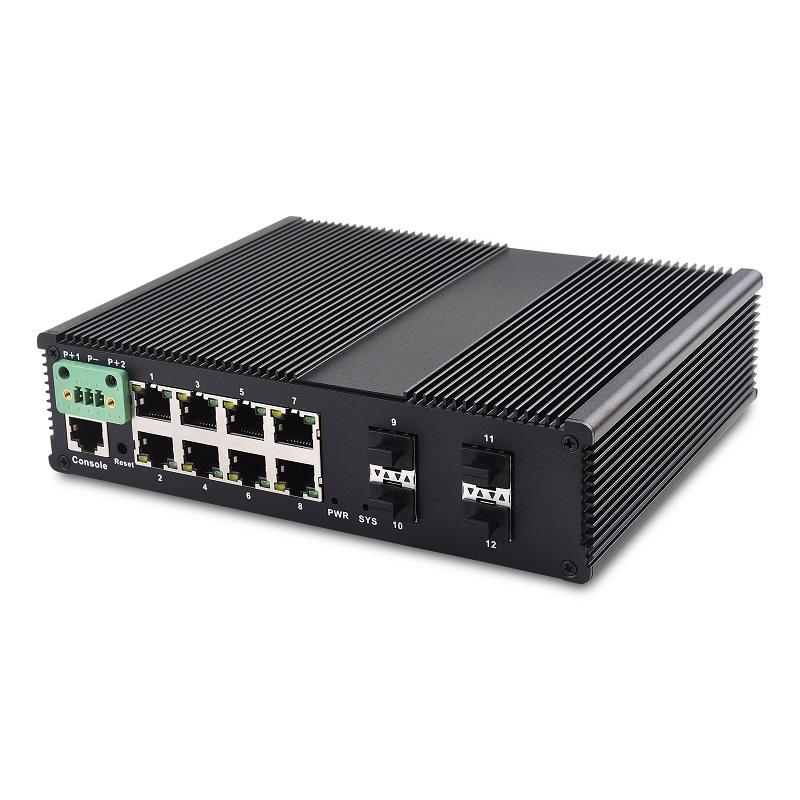Managed switch products provide a variety of network management methods based on the terminal control port (Console), based on Web pages, and support for Telnet to log in to the network remotely. Therefore, network administrators can perform local or remote real-time monitoring of the switch’s working status and network operating status, and manage the working status and working modes of all switch ports globally. So, what are the three major indicators of managed industrial switches?
Three Indicators of Managed Switches
1. Backplane bandwidth: Determines the upper limit of the connection bandwidth between each interface template and the switching engine.
Backplane bandwidth is the maximum amount of data that can be handled between the switch interface processor or interface card and the data bus. The backplane bandwidth indicates the total data exchange capacity of the switch, and the unit is Gbps, also known as the switching bandwidth. The backplane bandwidth of a general switch ranges from several Gbps to hundreds of Gbps. The higher the backplane bandwidth of a switch, the stronger the data processing capability, but the higher the design cost.
2. Exchange capacity: core indicators
3. Packet forwarding rate: the size of the switch’s ability to forward data packets
The three are interrelated. The higher the backplane bandwidth, the higher the switching capacity and the higher the packet forwarding rate.
Managed Switch Tasks
The switch is the most important network connection device in the local area network, and the management of the local area network mostly involves the management of the switch.
The network management switch supports SNMP protocol. SNMP protocol consists of a set of simple network communication specifications, which can complete all basic network management tasks, requires less network resources, and has some security mechanisms. The working mechanism of the SNMP protocol is very simple. It mainly realizes the exchange of network information through various types of messages, namely PDUs (Protocol Data Units). However, managed switches are much more expensive than the unmanaged switches described below.
Used to track traffic and sessions
Managed switches employ an embedded Remote Monitoring (RMON) standard for tracking traffic and sessions, which is effective in determining bottlenecks and chokepoints in the network. The software agent supports 4 RMON groups (history, statistics, alarms and events), enhancing traffic management, monitoring and analysis. Statistics are general network traffic statistics; history is network traffic statistics within a certain time interval; alarms can be issued when preset network parameter limits are exceeded; time represents management events.
Provides policy-based QoS
There are also managed switches that provide policy-based QoS (Quality of service). Policies are rules that govern switch behavior. Network administrators use policies to assign bandwidth, prioritization, and control network access to application flows. The focus is on bandwidth management policies required to meet service-level agreements and how policies are issued to switches. Multifunction light-emitting diodes (LEDs) at each port of the switch to indicate port status, half/full duplex, and 10BaseT/100BaseT, and switch status LEDs to indicate system, redundant power (RPS), and bandwidth utilization A comprehensive and convenient visual management system has been formed. Most switches below the departmental level are mostly unmanaged, and only enterprise-level switches and a few departmental-level switches support network management functions.
Post time: Mar-04-2022






